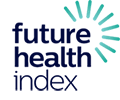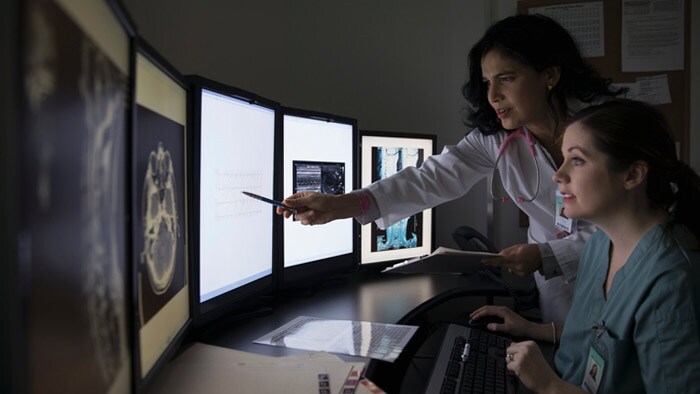The role of radiology in realizing value-based healthcare


Dec 31, 2019 - reading time 9 mins
Chief Medical Officer, Diagnostic Imaging, Philips Dr. Chip Truwit is the Chief Medical Officer of the Diagnostic Imaging Business Group of Philips. In this role, he brings his clinical expertise from over 19 years in radiology towards the transformation of healthcare, particularly with the advent of technologies like AI that merges traditional imaging into the holistic view of the digital patient.

Amidst the growing prevalence of chronic diseases and subsequent demand for care, healthcare systems face a future challenge of ensuring the continued provision of high-quality medical services. Philips’ Future Health Index study has identified value-based care as a key way to cope with this challenge – with radiology playing a central role in realizing this. In this article, Dr Chip Truwit, Philips Chief Medical Officer for Diagnostic Imaging, outlines how improving radiology’s role through new technologies, and ensuring connected, efficient data workflows can ultimately benefit patients and medical staff for more accurate and faster diagnosis.

Rapid aging of the world’s population and the growing number of patients with chronic diseases are significantly increasing the demand for healthcare services and, as a result, healthcare costs. However, the number of experienced and skilled medical professionals is not meeting the rapidly growing demand for medical services. It causes a deepening shortage of medical professionals. If this situation continues, it will be more difficult to provide high-quality medical services to the general public. To cope with this challenge, approaches in healthcare are changing from volume-based care, which focuses to provide medical service, to value-based care, representing a drive for improved patient outcomes at a lower cost. Value-based care attaches incentives and payments according to results, not system workload. As a result, it encourages elements like quality, the patient experience and their participation in decisions to be prioritized by the care team. The medical and healthcare industries are striving to achieve the Quadruple Aim with this approach: better health outcomes, improved patient experience, improved staff experience, and lower cost of care. Radiology takes an important role in realizing value-based care. That is because radiology has a great impact on the entire process of diagnosis, treatment and follow-up care. Things are put on hold until you get the answer from radiology. Moreover, early diagnosis of diseases through imaging enables rapid and effective treatment while reducing costs. Radiology is actively seeking solutions to strengthen precision diagnosis capabilities to realize value-based healthcare. As our diagnosis of diseases becomes more personalized to the individual patient, we are starting to develop treatment paths tailored to their individual needs. Accordingly, the medical and healthcare industries are working hard to effectively collect and analyze vast amounts of medical data based on latest technologies, and to create an environment where clinicians can make a personalized, precision diagnosis more efficiently. To that end, it is necessary to have a systems view, which considers the whole radiology journey as an ecosystem. The most important point of the radiology ecosystem is that the patient is at its center. And to realize this ecosystem, the medical sector has to comprehensively connect the data generated from radiology, technologies and various stakeholders such as patients, medical workers, radiologists and hospital staff. The ecosystem of radiology requires three elements. First, there should be state of the art technology that seamlessly collects and analyzes the clinical data created throughout the entire medical process. That is because clinicians can make diagnosis more accurately and quickly and determine the direction of treatment based on that information. Philips’ Future Health Index (FHI) 2019 study indicates the benefits of using digital health records, where 59% of healthcare professionals surveyed in the 15-country study agree that technology has a positive impact on patient outcomes.
Second, technologies and solutions are needed to help ensure appropriate and effective allocation and management of various human and physical resources in the ecosystem of radiology. This allows many people, from receptionists and technologists, to radiologists and physicians, as well as hospital administrators, to smoothly perform the entire process of radiology. Third, the way clinical capabilities and operating efficiency are connected must align with a robust information technology foundation, providing the foundations for future developments powered by artificial intelligence (AI). Through big data analysis, AI translates large amounts of data into actionable insights. These insights can empower clinicians, hospital administrators and patients to achieve better health outcomes at lower cost. The true value of AI can only be realized when it’s combined with a deep understanding of the clinical and operational context in which it’s applied. If this radiology ecosystem is implemented, you can immediately see how patients, medical professionals, and hospital staff experience the entire journey of radiology. With abundant and meaningful clinical data, clinicians can make more accurate diagnosis, and the workflow of medical staff and hospital workers can be simplified by reducing inefficiencies, bottlenecks or wasted time in the whole process of diagnostic radiology. Hospitals can maximize the productivity of radiology departments. This ecosystem provides patients with a more comfortable and positive care experience, and helps them manage their health at lower cost through a quicker and more precise diagnosis. As a result, this virtuous ecosystem of diagnostic radiology will serve as a backbone for realizing value-based healthcare and contributing to the realization of the Quadruple Aim in the healthcare industry.







